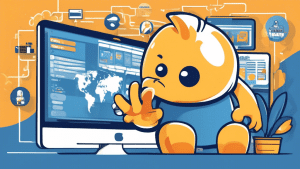Businesses often encounter friction points, which are obstacles that hinder the smooth operation of processes, customer satisfaction, or employee performance. Addressing these friction points promptly and effectively is vital for any organization that aims to maintain efficiency, morale, and customer loyalty. Below are some of the key strategies for identifying and resolving these issues systematically.
Identify the Source of Friction
The first step in resolving friction points is to accurately identify them. This can be accomplished through:
- Customer Feedback: Regularly gather feedback from your customers through surveys, reviews, and direct communication. Listen carefully to their pain points and suggestions.
- Employee Input: Employees are often the first to experience operational inefficiencies. Hold regular meetings and create an open-door policy to encourage them to share their insights.
- Data Analysis: Utilize data analytics to pinpoint areas where performance metrics indicate a drop-off. This quantitative approach can highlight bottlenecks that may not be immediately visible.
Prioritize Friction Points
Not all friction points are created equal; some will have a more significant impact on your business than others. Once identified, prioritize these issues based on their severity and the potential benefits of resolving them. Consider using a matrix to score each friction point based on factors such as urgency, impact, and feasibility.
Implement Effective Solutions
With your prioritized list in hand, develop targeted strategies to address each issue. Here are several effective approaches:
- Process Optimization: Streamline workflows and eliminate unnecessary steps. This can involve automating repetitive tasks or redesigning procedures to be more efficient.
- Customer Support Improvements: Enhance customer service by training staff, implementing better customer relationship management (CRM) systems, and offering multiple channels for support.
- Technology Upgrades: Invest in modern technology to replace outdated systems that may be causing delays or errors. Ensure that all team members are adequately trained on new tools.
- Employee Training: Equip employees with the skills and knowledge they need to perform their job effectively. Ongoing training programs can help to continually optimize performance.
Monitor and Adjust
Resolving friction points is an ongoing process. After implementing solutions, continuously monitor the affected areas to ensure that the changes are having the desired effect. Solicit ongoing feedback from customers and employees, and be prepared to make adjustments as needed. Regular audits and reviews of your processes will keep potential problems from escalating.
Promote a Culture of Continuous Improvement
Lastly, foster a company culture that values continuous improvement. Encourage employees to be proactive in identifying and solving friction points. Recognize and reward those who contribute to making the workplace more efficient and customer-friendly.
By systematically identifying, prioritizing, and addressing friction points, businesses can significantly improve their operations, enhance customer satisfaction, and boost employee morale. Zing Business Systems provides done-for-you solutions for Google Business Profiles or provides ideas and solutions for the DIY business owner.






No comments! Be the first commenter?